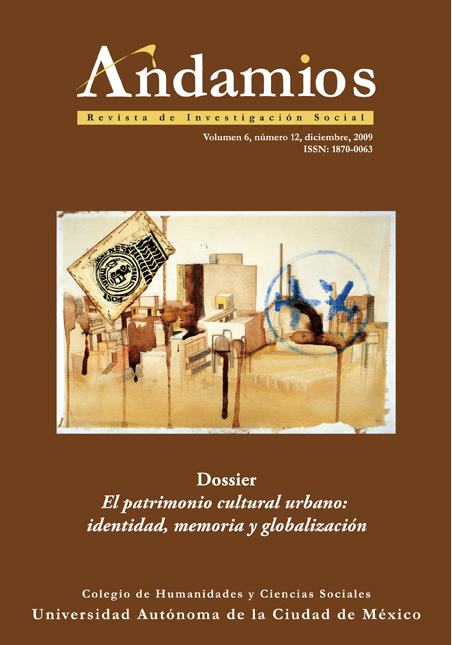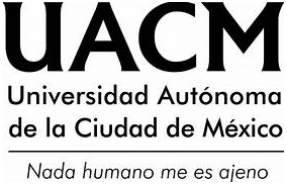WITH ARENDT AND AGAINST ARENDT: JUDGING HER JUDGMENT ON RACIAL INTEGRATION IN THE UNITED SATES DURING THE TWENTIETH CENTURY
DOI:
https://doi.org/10.29092/uacm.v6i12.142Keywords:
Discrimination, equality, political judgment, public sphere, democracyAbstract
This paper examines Hannah Arendt’s political judgment on racial integration in the United States during the Twentieth Century. According to Arendt, discrimination is an issue that belongs to the social realm, not to the political one. Personal features that shape individuals –race, for example– must be left outside the political debate, as they confer communitarian identity. On the contrary, Arendt wanted politics to be defined in terms of a discussion among individuals who claim specific positions. As we can se, Arendt´s judgment on discrimination is conditioned by her rigorous separation between the social and the political realms.
Downloads
References
ARENDT, H. (1988), Sobre la revolución. Madrid: Alianza.
____________ (1993), La condición humana. Barcelona: Paidós.
____________ (1996), Entre el pasado y el futuro. Ocho ejercicios sobre la comprensión política. Barcelona: Península.
____________ (1997), “Reflexiones sobre la revolución húngara”, en Debats, vol. II, núm. 60, junio-agosto. Valencia: Alfons el Magnánim.
____________ (1998), Crisis de la república. Barcelona: Taurus.
____________ (2002), La vida del espíritu. Barcelona: Paidós.
____________ (2002a) Tiempos presentes. Barcelona: Gedisa.
____________ (2004), Los orígenes del totalitarismo. México: Taurus.
BENHABIB, S. (1996), The Reluctant Modernism of Hannah Arendt. Thousand Oaks, California: Sage.
____________ (2004), Los derechos de los otros. Extranjeros, residentes y ciudadanos. Barcelona: Gedisa.
DISCH, L. J. (1994), Hannah Arendt and the Limits of Philosophy. Ithaca: Cornell University Press.
GLAZER, N. (1987), Affirmative Discrimination. Ethnic Inequality and Public Policy. Cambridge, Massachussets y Londres: Harvard University Press.
HABERMAS, J. (2002), Historia y crítica de la opinión pública. La transformación estructural de la vida pública. Barcelona: Gustavo Gili.
LARA, M. P. (1998), Moral Textures. Feminist Narratives in the Public Sphere. Berkeley, Los Angeles y Londres: University of California Press.
PITKIN, H. F. (1998), The Attack of the Blob. Hannah Arendt’s Concept of the Social. Chicago: The University of Chicago Press.
RODRÍGUEZ ZEPEDA, J. (2004), ¿Qué es la discriminación y cómo combatirla?. México, Consejo Nacional para Prevenir la Discriminación.
____________ (2006), Un marco teórico para la discriminación. México: Consejo Nacional para Prevenir la Discriminación. (2003), Conferencias sobre la filosofía política de Kant. Barcelona: Paidós.
TOOBIN, J. (2006), “Unanswered Questions”, en The New Yorker. Nueva York: 23 de enero de 2006.
YOUNG-BRUEHL, E. (204), Hannah Arendt. For Love of the World. New Haven y Londres: Yale University Press.
Published
Issue
Section
License
This Journal is licensed under Creative Commons Mexico 2.5. It is allowed to reproduce and disseminate the contents of the Journal for educational or research purposes, not for profit, as long as they are not mutilated and cite the source (Andamios, Revista de Investigación Social) and the author.
The copyright of the articles published in Andamios, Revista de Investigación Social are transferred by the author(s) to Universidad Autónoma de la Ciudad de México when the originals have been accepted, so that they are published and distributed both in the printed and electronic versions of the Journal. However, as established by law, the author(s) retains their moral rights. The author(s) will receive a form of assignment of copyright that they must to sign when their original has been accepted. In the case of collective articles, the signature of one of the authors will suffice, provided that the latter has obtained the consent of the others.
Authors may use the material of their article in other works or books published by themselves, with the condition of quoting Andamios as the original source of the texts.
The articles contained in this publication are the responsibility of their authors and do not compromise the official position of Andamios, Revista de Investigación Social of the Universidad Autónoma de la Ciudad de México.


